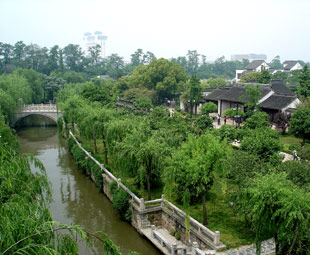| Home / Environment / Photo News | Tools: Save | Print | E-mail | Most Read |
| Project to Offer Green Guidelines |
| Adjust font size: |
A new environmental research project, aimed at providing policy-makers with guidelines for environmentally friendly development, was launched on Friday in
The two-year project is a collaboration between the State Environmental Protection Administration (SEPA) and the The completed guidelines will comprise four parts an introduction to the project's work followed by in-depth advice on protecting the ecosystem, dealing with man-made pollution and providing incentives for green policy-making. The basis for the project will be research into how to protect China's ecosystem, with studies into preventing water, air, noise, waste, oceanic and radioactive pollution, according to Xu Kuangdi, vice-chairman of the 10th National Committee of the Chinese People's Political Consultative Conference (CPPCC). Sections on dealing with man-made pollution will confront hot issues such as industrial pollution, cleaning up urban environments and protecting public health. Research into the causes of industrial pollution will focus on heavily polluting industries such as petroleum, chemicals, iron and steel, power generation and papermaking. Work on rural environmental protection will look at water security, pesticide and fertilizer use, and developing biomass energy. "Currently, the quality of research into pollution in He urged the research group to look for ways economic growth and environmental protection could go hand in hand. Zeng said that besides traditional environmental problems like air and water pollution or desertification, According to Zeng, about 70 percent of Last year, Sulfur dioxide emissions increased by nearly 463,000 tons, 1.8 percent higher than the previous year. Chemical oxygen demand, a water pollution index, reached 14.31 million tons, 173,000 tons more than the year before and 1.2 percent higher than in 2005, according to SEPA data. Mass accidents caused by environmental problems have increased by 30 percent annually. Energy consumption per unit of GDP dropped 1.23 percent year-on-year in 2006, the first annual decline since 2003, figures from the National Bureau of Statistics showed. This year, the country has launched a series of programs designed to meet the environmental targets, such as the national pollution source investigation and a drive to close down small-scale power plants. ( |
| Tools: Save | Print | E-mail | Most Read |
 |
| Related Stories |
